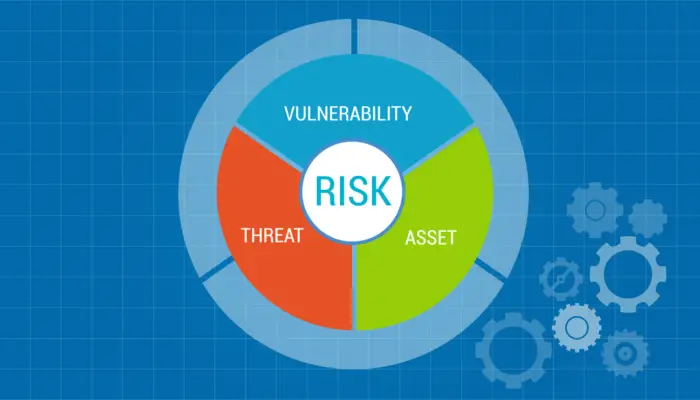RCSA banking, or Risk Control Self-Assessment, is a vital tool financial institutions use to strengthen their risk culture and compliance. With the increasing importance of risk management and regulatory compliance in the banking industry, RCSA has become an essential element of a bank’s operational risk management function and framework in its quarterly operational risk report.
It is a proactive approach that enables senior management of banks to identify and mitigate potential risks before they escalate into major issues. In implementing RCSA banking practices, banks can foster a culture of risk awareness and accountability, which is critical to the success of any financial institution.
This article will explore the role of RCSA banking in strengthening risk culture and compliance and how it can help banks to achieve their strategic objectives.
From understanding the benefits of RCSA banking to implementing RCSA banking strategies, this article will provide valuable insights for banking professionals and individuals who want to gain a deeper understanding of the banking industry.

Rcsa Definition
What is RCSA Banking?
If you want to know what RCSA Banking is all about, you’re in the right place. RCSA stands for Risk Control, a methodology used in the banking industry to evaluate and manage operational risks. This approach allows banks to identify and assess risks arising from failed internal processes, people, and systems, and then implement controls to mitigate those risks.
The control environment is a crucial component of RCSA Banking. The set of values, policies, and procedures form the foundation of a bank’s risk management framework. The control environment includes elements such as the bank’s culture, the tone at the top, and the governance structure. Banks with a strong control environment are better equipped to manage risks and comply with regulations. Operational risk losses from internal fraud can result from activities such as asset misappropriation, forgery, and theft, which RCSA aims to identify and mitigate.
RCSA Banking helps strengthen risk culture and compliance by promoting a proactive approach to risk management. Instead of waiting for a problem to occur, banks using RCSA continually assess their risks and implement controls to mitigate them. This approach fosters a culture of risk awareness and encourages employees to take ownership of their risks.
In conclusion, RCSA Banking is vital for banks looking to manage their operational risks and comply with regulations. By assessing risks, implementing controls adequately address risks, and fostering a risk-aware culture, banks can better protect their customers and themselves. A strong control environment is essential for effective operational risk exposure and management, and RCSA helps banks achieve this.
Benefits of RCSA Banking
You’ll discover how RCSA banking can help you reap the rewards of a more secure and accountable financial institution. RCSA banking, or Risk Control Self-Assessment, is a process banks use to identify and evaluate potential risks within their organization. This system is designed to promote a risk-aware culture, strengthen risk management, and ensure compliance with regulatory requirements.
One of the benefits of RCSA banking is that it allows banks to strengthen their risk culture. By creating a culture focused on risk management, employees become more aware of the organisation’s potential risks, including external fraud such as check fraud, theft, and hacking, and are better equipped to manage them. This can help reduce the likelihood of unexpected losses and ensure the bank can operate safely and stably.
Another benefit of RCSA banking is that it helps to ensure compliance with regulatory requirements. By regularly assessing the bank’s risk management processes, the bank can identify any areas where it may not fully comply with regulations and take steps to address these issues. This can help avoid costly fines and reputational damage resulting from non-compliance.
Finally, RCSA banking allows financial institutions to conduct self-assessments that can help to identify potential weaknesses in their risk management processes. By identifying these weaknesses, the bank can take steps to address them and improve its overall risk management capabilities.
This can help the bank to stay ahead of the competition and maintain its position as a leader in the financial industry. Overall, the benefits of R
Understanding Operational Risk Management and Compliance
As you navigate the complexities residual risks of the financial industry, it’s crucial to have a comprehensive understanding of risk and compliance. In the banking sector, operational risk is a significant concern, as institutions are vulnerable to various risks external events that could disrupt their operations and financial stability.
That’s where RCSA banking comes in. It’s a risk management approach that focuses on identifying, assessing, and mitigating risks associated with an institution’s operations. RCSA banking supports an institution’s risk culture and compliance efforts, which are essential for its success.
RCSA banking supports risk culture by providing a framework for identifying, assessing, and mitigating risks. It enables institutions to embed risk management into their day-to-day operations and empowers employees to take responsibility for managing risks
Compliance is another critical aspect of risk management. It refers to an institution’s adherence to laws, regulations, and internal policies and procedures. Non-compliance can lead to significant legal and financial consequences, including fines, reputational damage, and loss of business.
RCSA banking supports compliance efforts by providing a systematic approach to identifying and assessing compliance risks. It enables institutions to both identify risks and gaps in their compliance program and take steps to close them.
In summary, RCSA banking is essential for managing operational risks, building a strong risk culture, and ensuring compliance with laws, regulations, and internal policies. It enables institutions to identify and assess risks, prioritize risk management efforts, and take steps to mitigate risks
By embedding risk management into their day-to-day business operations, institutions can create a culture of risk awareness and take ownership of their risk management role. Ultimately, RCSA banking helps institutions to achieve their strategic goals while minimizing the impact of operational risks

Security Risk Analysis Mips
RCSA Banking Strategies
Get ready to learn effective strategies for managing operational risks and enhancing your institution’s risk management framework with RCSA banking. RCSA (Control Self Assessment) is a process banks use to ensure that their risk management framework is effective, efficient, and compliant.
It helps identify and manage potential operational risks and improve the bank’s overall operational risk management culture. RCSA banking strategies are essential in strengthening enterprise risk management culture and compliance in today’s financial industry.
RCSA banking strategies are designed to identify potential operational risks and evaluate the effectiveness of existing risk management controls. These strategies involve systematically evaluating the bank’s risk management framework, including its policies, procedures, and controls. The following table highlights the five key risk indicators strategies used in RCSA banking:
Banks can effectively manage operational risk and risks and enhance their overall risk management framework by implementing these strategies. RCSA banking strategies are crucial in strengthening risk culture and compliance in the financial industry. Banks that fail to implement these strategies are at risk of regulatory non-compliance and loss of customer trust.
In conclusion, RCSA banking strategies are critical in enhancing risk management and compliance in the financial industry. Banks implementing these strategies can effectively manage operational risk capital and risks and improve their risk culture.
Organizatiosn utilizing the strategies outlined in the table above, banks can create a robust risk management framework that meets regulatory expectations and ensures customer trust. As the banking industry evolves, RCSA banking strategies will remain critical to effective risk management and compliance.
Implementation of RCSA Banking Practices
Now it’s time to implement these RCSA banking strategies and see how they can benefit your institution’s risk management framework. Implementing RCSA banking practices involves a thorough and continuous assessment of risks to ensure that the institution achieves its business objectives.
The process involves identifying risks and analysing and evaluating controls in place to mitigate the risks. Through this process, financial institutions can enhance their risk management capabilities, their risk and control self strengthen their risk culture, and improve compliance with regulatory requirements.
The first step in implementing RCSA banking practices is establishing a risk assessment framework that aligns with your institution’s business objectives. This involves defining the scope of the risk assessment itself, identifying the risk categories, setting risk appetite, and selecting the appropriate methodology to assess risks.
The framework should be regularly reviewed and updated to ensure it remains relevant and reflects changes in the business environment.
The second step residual risk take is to conduct risk control self-assessments. This involves evaluating the effectiveness of controls in place to mitigate risks and identify areas for improvement. Individuals with a deep understanding of the business processes and associated risks should conduct the assessments
The results of the assessments should be used to develop action plans to address the identified gaps and enhance the effectiveness of existing controls.
In conclusion, implementing RCSA banking practices is critical to the success of financial institutions. It enables them to identify, assess, and manage risks to achieve their business objectives while improving their risk culture and compliance with regulatory requirements.
Institutions can enhance their risk management capabilities, own strategic risk control weaknesses and achieve sustainable growth by establishing a risk assessment framework and conducting risk control self-assessments
Frequently Asked Questions
What do banks face the common challenges in implementing RCSA banking practices?
Implementing RCSA banking practices can be daunting for many financial institutions due to their various challenges. One of the most common challenges is the lack of a clear understanding of the process and how it aligns with the bank’s overall risk management strategy.
Additionally, the complexity of the RCSA framework can make it difficult to implement in a way that’s both effective and efficient. Another challenge is the need for consistent and accurate data, which can be difficult to obtain.
Finally, resistance to change from staff can pose a significant obstacle to successful implementation. Despite these challenges, banks that successfully implement RCSA banking practices can reap significant rewards, including improved risk management, increased compliance, and a stronger risk culture.
How does RCSA banking differ from traditional risk management approaches in the banking sector?
RCSA banking is a relatively new approach to risk management in the banking sector. Unlike traditional risk management approaches, RCSA banking focuses on identifying and assessing risks more granularly. This involves breaking down processes and activities into smaller components and analyzing the risks associated with each one.
By doing so, RCSA banking enables banks to understand their risk exposure better and take more targeted risk mitigation measures. Additionally, RCSA banking emphasizes the role of frontline staff in risk management, empowering them to identify and report risks in real-time.
Overall, RCSA banking represents a shift towards a more proactive and collaborative approach to risk management, which can help banks to manage their risks better and improve compliance.
Can RCSA banking help banks reduce operational risk and improve overall performance?
RCSA banking has emerged as a popular approach to managing operational risk in the banking sector. This approach differs from traditional credit risk and management methods by emphasizing
identifying and assessing risks proactively.
RCSA banking involves a comprehensive review of the bank’s processes, systems, and internal controls to identify any potential risks. This approach helps banks develop a risk culture embedded in their operations, making them more resilient to external shocks.
Furthermore, RCSA banking enables banks to comply with regulatory requirements and meet stakeholders’ expectations, including customers, investors, and regulators.
RCSA banking can help banks reduce operational risk and improve their overall performance, making it a valuable tool for modern banking.
What are some key risk indicators and success factors for RCSA banking implementation in large banks?
When it comes to implementing RCSA banking in large banks, several key success factors must be considered.
First and foremost, senior leadership must strongly commit to prioritising risk management and compliance. This includes providing adequate resources and support to risk managers for the RCSA program.
Effective communication, risk assessments, and collaboration across departments is crucial for identifying and addressing potential risks.
Finally, a culture of continuous improvement must be fostered, with regular reviews and updates to the RCSA process to ensure it remains effective and relevant.
Large banks can successfully implement RCSA banking and improve overall risk management and compliance by focusing on these key success factors.

Why is Risk Management Important in Project Management
How can RCSA banking support the development of a strong risk culture within a bank?
RCSA banking is a vital tool that can help develop a strong risk culture within a bank. By identifying and assessing risks, banks can proactively manage and mitigate them. This approach fosters a culture of transparency, accountability, and responsibility, which is essential for building stakeholder trust and confidence.
RCSA banking can also support compliance efforts by ensuring the bank’s operations align with regulatory requirements. In addition, implementing RCSA banking can help improve communication and collaboration among different departments, leading to a more integrated and effective risk management framework
Ultimately, a strong risk culture is critical for the long-term success of any bank, and RCSA banking is a key enabler of this culture.
Conclusion
RCSA banking is the key to safeguarding risk culture and compliance in the financial industry. Firms can detect risks, craft effective risk management plans, and adhere to legal requirements through implementation. This reduces the possibility of financial and operational losses, and damage to reputation and increases the organization’s endurance and effectiveness.

Understanding RCSA Audit
Moreover, RCSA banking offers a way forward for ongoing enhancement and growth. It encourages businesses to react to changes in the market and new hazards while instilling a culture of risk tolerance and responsibility.
RCSA banking helps firms build connections with their customers, investors, and the government by creating trust and reliability. It encourages a safe and secure financial system, one that is open to change and ready to meet new challenges.

Chris Ekai is a Risk Management expert with over 10 years of experience in the field. He has a Master’s(MSc) degree in Risk Management from University of Portsmouth and is a CPA and Finance professional. He currently works as a Content Manager at Risk Publishing, writing about Enterprise Risk Management, Business Continuity Management and Project Management.

